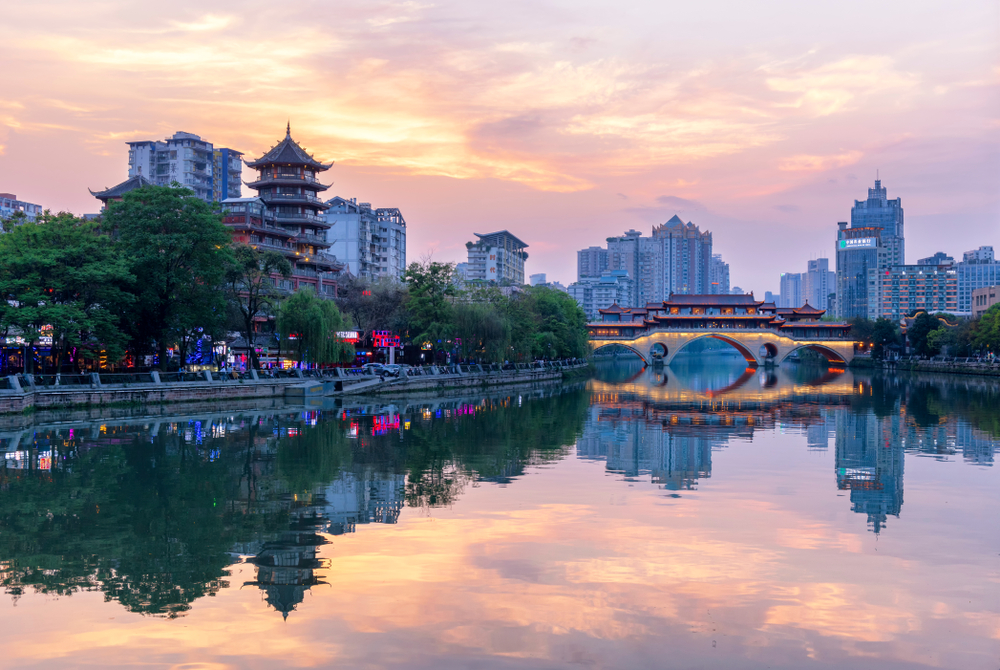Geography: Geography
Location
Eastern Asia, bordering the East China Sea, Korea Bay, Yellow Sea, and South China Sea, between North Korea and Vietnam
Geographic Coordinates
35 00 N, 105 00 E
Map References
Asia
Area
Total: 9,596,960 sq km
Land: 9,326,410 sq km
Water: 270,550 sq km
Country Comparison to the World: 5
Area Comparative: Slightly smaller than the US
Land Boundaries
Total: 22,457 km
Border Countries (15): Afghanistan 91 km, Bhutan 477 km, Burma 2129 km, India 2659 km, Kazakhstan 1765 km, North Korea 1352 km, Kyrgyzstan 1063 km, Laos 475 km, Mongolia 4630 km, Nepal 1389 km, Pakistan 438 km, Russia (northeast) 4133 km, Russia (northwest) 46 km, Tajikistan 477 km, Vietnam 1297 km
Coastline: 14,500 km
Maritime Claims
Territorial Sea: 12 nm
Exclusive Economic Zone: 200 nm
Contiguous Zone: 24 nm
Continental Shelf: 200 nm or to the edge of the continental margin
Climate
Extremely diverse; tropical in south to subarctic in north
Terrain
Mostly mountains, high plateaus, deserts in west; plains, deltas, and hills in east
Elevation
Mean Elevation: 1,840 m
Lowest Point: Turpan Pendi -154 m
Highest Point: Mount Everest (highest peak in Asia and highest point on earth above sea level) 8,848 m
Natural Resources
Coal, iron ore, petroleum, natural gas, mercury, tin, tungsten, antimony, manganese, molybdenum, vanadium, magnetite, aluminum, lead, zinc, rare earth elements, uranium, hydropower potential (world's largest), arable land
Land Use
Agricultural Land: 54.7% (2011 est.)
Arable Land: 11.3% (2011 est.)
Permanent crops: 1.6% (2011 est.)
Permanent pasture: 41.8% (2011 est.)
Forest: 22.3% (2011 est.)
Other: 23% (2011 est.)
Irrigated Land: 690,070 sq km (2012)
Population Distribution
Overwhelming majority of the population is found in the eastern half of the country; the west, with its vast mountainous and desert areas, remains sparsely populated; though ranked first in the world in total population, overall density is less than that of many other countries in Asia and Europe; high population density is found along the Yangtze and Yellow River valleys, the Xi Jiang River delta, the Sichuan Basin (around Chengdu), in and around Beijing, and the industrial area around Shenyang
Natural Hazards
Frequent typhoons (about five per year along southern and eastern coasts); damaging floods; tsunamis; earthquakes; droughts; land subsidence
Volcanism: China contains some historically active volcanoes including Changbaishan (also known as Baitoushan, Baegdu, or P'aektu-san), Hainan Dao, and Kunlun although most have been relatively inactive in recent centuries
Current Environmental Issues
- Air pollution (greenhouse gases, sulfur dioxide particulates) from reliance on coal produces acid rain;
- China is the world's largest single emitter of carbon dioxide from the burning of fossil fuels;
- Water shortages, particularly in the north;
- Water pollution from untreated wastes;
- Coastal destruction due to land reclamation, industrial development, and aquaculture;
- Deforestation and habitat destruction;
- Poor land management leads to soil erosion, landslides, floods, droughts, dust storms, and desertification;
- Trade in endangered species
Notes:
- World's fourth largest country (after Russia, Canada, and US) and largest country situated entirely in Asia;
- Mount Everest on the border with Nepal is the world's tallest peak above sea level
Article written for World Trade Press by CIA Factbook, Current as of 30 April, 2021.
Copyright © 1993—2025 World Trade Press. All rights reserved.

 China
China 
